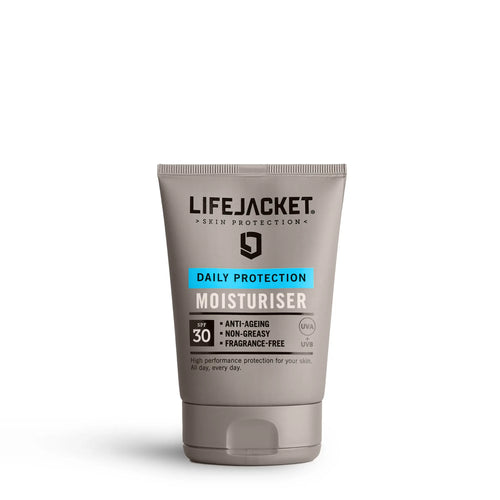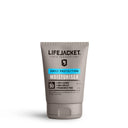Life's busy. We all have a lot going on from week to week. It can feel overwhelming almost all the time. That cocktail of external and internal stress can send your body out of whack. And you might be finding that the body's largest organ - your skin - is in the line of fire.
However, through the lens of a glass-half-full outlook (positivity is one of LifeJacket's core tenets after all!), you can easily manage your skin back to a point of balance and that's what we want to help you with.
Environmental stress and your skin
First of all, what's environmental stress?
We always talk about external 'aggressors.' They surround you every single day. The most damaging of these is ultraviolet light which is present all year round but others include smoke, pollution, icy winds or changes in temperature. They can all damage or overload your skin.
For example (and because it's seasonally appropriate), cold, windy weather can draw moisture from your skin causing dryness, redness, tightness, flaky or cracked skin and increased sensitivity. When the skin barrier isn't in prime condition, it can then become more sensitised to other external irritants.
Internal stress and your skin
In the same way these 'physical' aggressors can impact your skin, internal pressures can also stress your skin. That's because stress can cause an increase in the production of adrenaline and cortisol. These hormones lead to inflammation and overproduction of sebum (oil found in the skin) contributing to breakouts, spots, blocked pores and unwanted oiliness.
Like an upset stomach, the response can vary from person to person and the release of these stress hormones might also trigger sweat glands, making your skin more likely to become dehydrated.
What are the common signs of stressed skin?
Your skin is resilient but also delicate. Internal or external, any form of stress can present itself on your skin. Typical signs of a stressed skin barrier include:
- Redness
- Inflamed skin
- Dryness or dehydrated skin due to moisture loss externally
- Irritation and itchiness
- Stinging or burning sensations, especially when applying products
- Rosacea breakouts and/or eczema, dermatitis getting worse
- Discolouration under the eyes or puffiness
- Increased breakouts, and
- Overall dullness to your complexion
Managing skin stress
If you're experiencing any of these symptoms on any skin surface, it's time to clean, nourish, protect and hydrate your skin. And not just once but consistently as part of a daily routine. Once balance has been restored, you want to maintain the status quo and ensure your skin is protected every day.
The skin barrier needs to be repaired and that's important because skin plays a critical role in keeping foreign bodies out. If skin is damaged, its ability to perform this protective function might be compromised.
Here's our way of doing a skin protection routine for very little effort. Why not try it out for a few weeks and see if it make a difference.
-
Step 1 (morning)
- In the morning, rinse your face with water and dry with a towel
- Apply our SPF 30 Daily Protection Moisturiser to your face to make sure your skin is both hydrated and protected before heading outside
-
Step 2 (evening)
- At night, wash your face using our Face Cleansing Bar to remove the day’s toxins and grimeApply the Daily Repair Moisturiser before bed to help the skin barrier recover and hydrate overnight
If you commit to this religiously, we believe you'll see results. Use extra moisturiser whenever you feel your skin needs more nourishment. If symptoms do persist, it would be worth visiting your GP or a dermatologist.






